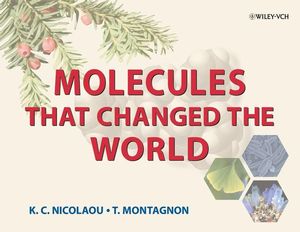
Which natural molecules have truly changed the world? Here are four famous examples:
Pencillin
The narrative surrounding the discovery and development of penicillin is truly remarkable, possessing all the ingredients of a best-selling novel: serendipitous discovery, wartime political intrigue, fierce competition, and an eclectic cast of characters. In addition, the dreadful problem of fatal bacterial infections was solved. All this was a consequence of the extraction of a broad-spectrum antibiotic from an ordinary mold, following an observation made by Alexander Fleming in 1928. Despite its importance and the efforts of many chemists, the total synthesis of penicillin would not be accomplished until 1957.
Besides constituting a landmark medical breakthrough that saved lives and alleviated human suffering, this fortunate event also revealed to scientists a new treasure trove of biologically active molecules ripe for exploration. Thus, to the forest, which held the key to the development of Aspirin®, we now add the kingdom of microbes as a rich hunting ground for molecules endowed with healing powers. Indeed, many such molecules have since been isolated from the soil and other habitats where bacteria and fungi hold sway and, from this bountiful harvest, scientists have derived a host of ‘magic bullets’ and billion dollar drugs.
Quinine
Quinine has a most colourful biography. By modern standards quinine is a small and fairly simple molecule, yet it has played a pivotal medicinal role in human society for hundreds of years, and its chemistry has fascinated and challenged the brightest minds of the science since the dawn of this discipline. Indeed, it took nearly one hundred fifty years for chemists to achieve a fully stereoselective synthesis of this natural product. In addition to providing an intellectual challenge for organic chemists, the study of quinine could be said to have played a major role in laying the foundations of much for the modern chemical industry.
It has been used to treat the deadly fevers associated with malaria for nearly four hundred years. The curse of malaria, which is named after the Italian phrase malaria (literally, bad air), has been felt by mankind since ancient times. It is referred to in both the ancient Indian Vedic writings and in the prose of Hippocrates, from 3,600 and 2,500 years ago, respectively. This debilitating parasitic disease has decimated armies and stunted the growth of many civilizations.
Morphine
A long time ago, in Asia, a legend began: Buddha had cut off his eyelids in order to prevent sleep overtaking him, and where his eyelids fell to the earth a herb grew, which blossomed bearing a beautiful nodding violet flower that gave sleep and tortured dreams to mankind. The flower being described here is the opium poppy, and the natural product this plant produces is morphine. The dichotomy of this myth, in which Buddha, a powerful symbol of good, gives rise to a flower that taunts mankind with disturbed sleep, is reflected in the contrasting biological properties of morphine. This natural product not only has the power to alleviate intense pain, but also rapidly induces dependence and addiction. Morphine, although conquered, did not stop luring chemists towards its deceptive web of atoms. In each decade since Gates’ triumph at least one group of chemists has successfully completed a total synthesis of morphine, and many more have published accounts of their struggles with this molecule. Most recently, world-renowned chemist Barry M. Trost and his research group at Stanford University completed an enantioselective synthesis of (–)-codeine, and thus (–)-morphine, fifty years after Gates’ original accomplishment. Among Trost’s many talents, the use of palladium-catalyzed cross-coupling reactions stands out, and reactions of this type were fundamental to his conquest of morphine. This elegant total synthesis of morphine provides us with an aesthetically pleasing end to the story of this amazing, but fearful, molecule which has impacted the lives of people for so long.
Aspirin
The story of Aspirin® is a fascinating tale about the most successful medication in history. It is an account full of firsts, and a splendid illustration of how the medicinal properties of a natural product may be optimized through subtle chemical manipulations. The story begins more than 3,500 years ago when ancient Egyptian physicians advocated salicin, in the form of herbal preparations, as a remedy for rheumatism and back pain. The Ebers papyrus, a collection of 877 medicinal recipes dating from this early period, describes the preparation of a crude infusion of myrtle bark. Of course, these ancient people had no knowledge of the active ingredient of their remedy, or even an understanding that its effects could be attributed to a single component. This situation was set to prevail until the nineteenth century, when chemistry came of age.
Aspirin® and its predecessors have saved lives and alleviated suffering for over 3,500 years. What makes this discovery all the more remarkable is that with each year that passes this wonder-drug seems to become even more popular, finding new avenues by which to promote good health. For example, Aspirin® has recently been advocated as an ally in the fight against cancer, for use in treating diabetes, and as an agent to combat preeclampsia (a complication of pregnancy). The story of Aspirin® provides a classic example of the discovery and optimization of a drug based on a lead from nature (a natural product), which is as enduring as the drug itself.
From “Molecules that changed the world” ISBN: 978-3-527-30983-2

